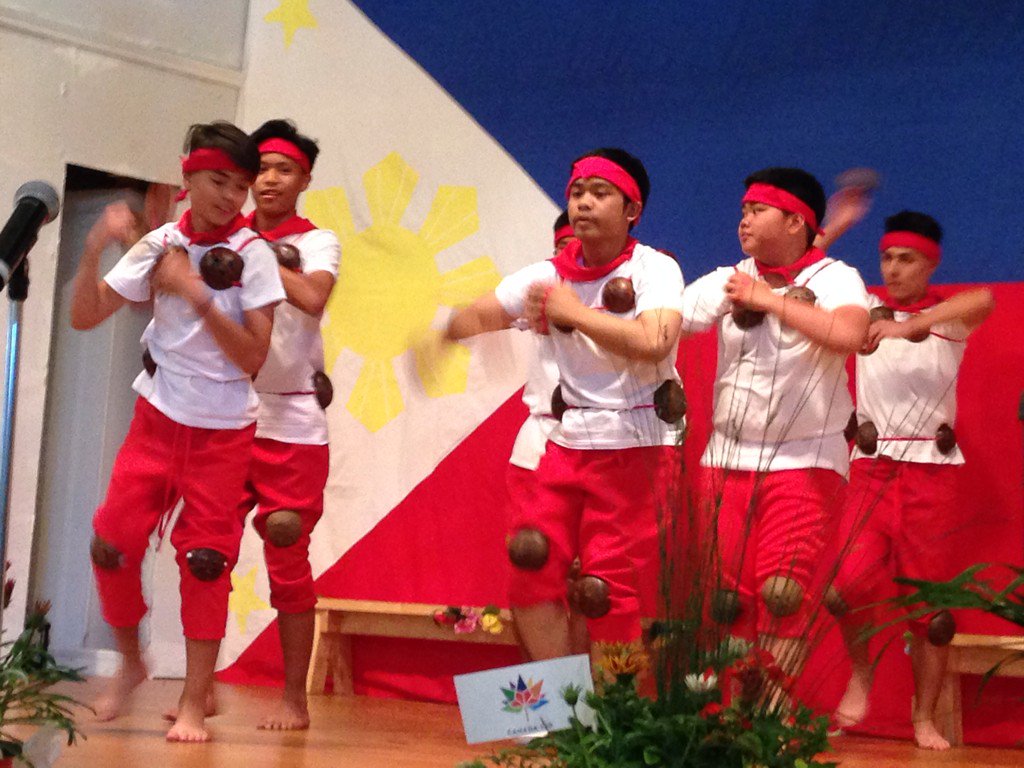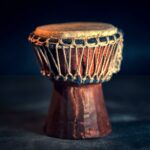Ever heard the captivating clicking of coconut shells used as musical instruments? That’s the sound of Maglalatik, a Filipino dance steeped in history, faith, and rhythmic energy. From its possible origins in 18th-century mock battles to its modern-day performances, the Maglalatik isn’t just a dance; it’s a living narrative of Filipino culture and devotion. Let’s explore the moves, the music, and the meaning behind this unique tradition.
The Roots of Rhythm: Exploring Maglalatik’s Origins
From Coconuts to Conflict
Our journey begins in 18th-century Biñan, Laguna, Philippines, a land where Moro and Christian communities often clashed. Amidst this tension, a unique art form emerged: the Maglalatik. Likely inspired by disputes over latik (the residue from cooked coconut milk), the dance reflects the era’s struggles and rivalries. The dedication to San Isidro Labrador, the patron saint of farmers, adds another layer, possibly signifying a plea for protection over the vital coconut harvest. Delve into the vibrant tapestry of festival dance history and uncover the captivating stories behind these celebratory movements.
The Dance of a Thousand Shells: Costumes and Music
The Maglalatik’s music isn’t instrumental; it’s embodied. Dancers, adorned with coconut shell halves, become human percussion instruments, their movements creating a captivating rhythm. These costumes, crafted from simple materials, speak to the ingenuity of those who developed this art form.
From Rivalry to Reverence: Maglalatik’s Evolution
Transformation and Transcendence
The Maglalatik’s journey is one of transformation. From potential depictions of conflict, it evolved into a celebration of faith and community, performed during town fiestas and religious processions, especially in Biñan. This evolution showcases the resilience of Filipino culture and the ability of traditions to adapt while retaining their core significance.
Maglalatik Today: A Living Legacy
The Maglalatik’s story continues to unfold, woven into the fabric of Filipino identity. It connects audiences to the nation’s history and artistic heritage, while also adapting to modern influences. Exploring contemporary interpretations and regional variations reveals the dance’s dynamic nature and its ability to resonate with new generations.
Maglalatik Dance History: Unraveling the Origins and Symbolism
The Maglalatik dance, a vibrant expression of Filipino culture, tells a story through the clicking of coconut shells. This article delves into its origins, evolution, and cultural significance.
Unraveling the Roots
Pinpointing Maglalatik’s precise origin is complex. While it hails from Biñan, Laguna, its roots likely extend to pre-colonial agricultural traditions. Early Filipinos may have celebrated harvests with movements mimicking planting and gathering, accompanied by rhythmic sounds from natural materials like coconut shells. These rituals, connected to the land, probably laid the foundation for the Maglalatik.
The Spanish Influence: A Cultural Crossroads
The arrival of the Spanish in the 16th century brought both conflict and cultural exchange. This tension is reflected in the Maglalatik’s mock battle between groups representing Moros and Christians. The latik, a byproduct of coconut milk, becomes a powerful symbol, possibly representing the struggle over resources or cultural dominance. Some see the “battle” as playful rivalry; others interpret it as deeper historical conflict. The dance’s dedication to San Isidro Labrador, the patron saint of farmers, suggests a blending of cultural and religious influences.
Symbolism and Significance
The Maglalatik’s simple materials create a visually stunning performance. Coconut shells become instruments and costume elements. The traditionally all-male dancers’ red trousers might symbolize the energy of the mock battle or the festive spirit. Here’s a breakdown of possible meanings:
| Element | Possible Significance |
|---|---|
| Coconut Shells | Resourcefulness, nature connection, percussive instrument, representation of weapons and celebration |
| Red Trousers | Energy, passion, festivity, perhaps battle intensity or harvest joy |
| Mock Battle | Historical conflict, cultural exchange, playful rivalry, reflection of societal tensions |
| San Isidro Dedication | Blend of indigenous and Catholic faith, cultural adaptation and resilience |
These meanings can vary based on interpretations and regional variations. The Maglalatik is a living testament to Filipino ingenuity, storytelling, and resilience. Its enduring legacy connects Filipinos to their rich heritage.
The Four Parts of Maglalatik: A Story in Motion
The Maglalatik dance unfolds in four distinct parts: Palipasan, Baligtaran, Paseo, and Escaramuza. Let’s explore each one.
The Heat of Battle: Palipasan and Baligtaran
Imagine dancers in a mesmerizing circle, coconut shells clacking together, creating a percussive storm. The Palipasan and Baligtaran depict a mock battle. The Palipasan represents the tense standoff before conflict, while the Baligtaran showcases the intensified mock battle, capturing the energy of conflict.
The Dance of Peace: Paseo and Escaramuza
The Maglalatik also embodies resolution and harmony. The Paseo bridges conflict and reconciliation, featuring fluid and graceful movements. The Escaramuza symbolizes the merging of the two groups, the coconut shells now creating a unified rhythm. This joyous expression of unity suggests the power of understanding and forgiveness. Scholars suggest it may also symbolize the blending of cultures.
Costumes, Music, and Cultural Significance
The costumes, distinct for each group, reinforce the narrative. The music, blending traditional instruments and clicking shells, adds another layer of meaning. Within this vibrant display, we see Filipino history, resilience, and the importance of community. Regional variations in costumes, steps, and emphasis highlight the dance’s dynamic and evolving nature.
The Maglalatik Ritual: More Than a Dance
The Maglalatik dance, originating from Biñan, Laguna, is a vibrant ritual. It depicts a mock battle between two groups (Moros and Christians), serving as a powerful representation of historical interactions. The dance transitions from clash to harmony, symbolizing reconciliation and unity.
It also holds religious significance as a tribute to San Isidro Labrador, highlighting the importance of agriculture. The coconut shell, transformed into a musical instrument, becomes an offering for a bountiful harvest. The costumes—traditionally, bare-chested male dancers in brightly colored red trousers and coconut shell adornments—are integral to the performance. Each movement creates a unique symphony of sound. Some believe Filipino martial arts elements are woven into the choreography.
The Maglalatik’s power lies in its storytelling through movement, blending hypnotic rhythm, vibrant costumes, and evocative movements. Historians suggest pre-colonial roots, with influences from Spanish colonization, making it a fascinating representation of Philippine history. Ongoing research continues to reveal new insights into this rich tradition.
- The Danielle Redlick Case: A Deep Dive into the Winter Park Tragedy - December 24, 2024
- Monopoly GO Cupid’s Cuties Event: Your Complete Guide to Rewards & Strategies - December 24, 2024
- Understanding Circumcision Scars: Types, Healing, and Minimization - December 24, 2024















